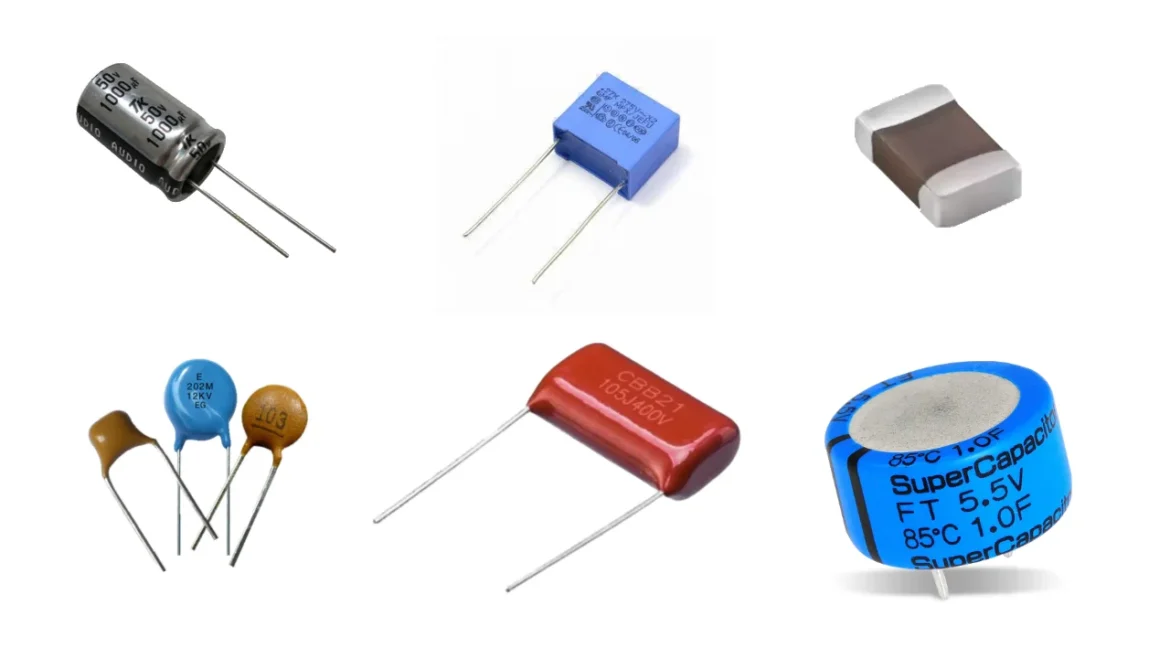Introduction
New to PCB design or electronics? You’ll quickly run into components like capacitors. Specifically, the 25V 1000uF SMD 4 x 5.4mm Electrolytic Capacitor plays a major role in energy storage, filtering, and stabilizing voltage in circuits.
In this beginner’s guide, we’ll break down everything you need to know—from definitions to using it in KiCad, one of the most powerful open-source PCB design tools.
What is a 25V 1000uF SMD Capacitor?
It’s a surface-mounted (SMD) electrolytic capacitor with a voltage rating of 25 volts and a capacitance of 1000 microfarads (uF). The 4 x 5.4mm refers to its physical size (diameter x height). These capacitors are perfect for tight spaces and are commonly used in power supply circuits.
Why It Matters for PCB Design
Choosing the right capacitor ensures your circuit runs smoothly, prevents voltage spikes, and maintains overall stability, especially in projects involving microcontrollers or motor drivers.
Understanding Electrolytic Capacitors
Definition and Basic Function
A capacitor stores and releases electrical energy. An electrolytic capacitor uses an electrolyte to increase capacitance, making it ideal for high-capacity needs like power filtering.
What Does “SMD” Mean?
SMD stands for Surface-Mount Device. These components are soldered directly onto the PCB surface, unlike through-hole components. They save space and make manufacturing more efficient.
Electrolytic vs Ceramic vs Film Capacitors
| Type | Capacitance Range | Size | Use Case |
|---|---|---|---|
| Electrolytic | High | Medium to Large | Power supply, filtering |
| Ceramic | Low to Medium | Very Small | Signal filtering |
| Film | Medium | Large | Audio, precision circuits |
Key Specifications of 25V 1000uF SMD Capacitor
Voltage Rating (25V)
The 25V rating means this capacitor can safely operate up to 25 volts. Always use a capacitor with a voltage rating at least 1.5x times higher than your circuit’s actual voltage.
Capacitance (1000uF)
1000 microfarads (uF) is a high value for SMD capacitors. This makes it great for smoothing out power in systems that need consistent voltage.
Size – 4 x 5.4mm Explained
This means the diameter is 4mm, and the height is 5.4mm. The compact size is perfect for modern electronics where space is premium.
Where and When to Use This Capacitor
Common Applications
- Power supplies
- Audio amplifiers
- Motor drivers
- Raspberry Pi/Arduino projects
- DC-to-DC converters
Ideal Use Cases
Use this capacitor in designs where:
- You need a stable voltage under fluctuating loads
- There’s limited space on the PCB
- High capacitance is required without a large footprint
Projects That Benefit From It
- IoT devices
- Robotics
- Portable gadgets
- LED drivers
- Battery-powered systems
What is KiCad?
KiCad is an open-source PCB design tool that lets you draw schematics, create footprints, and design multi-layer PCBs—perfect for beginners and pros alike.
Why Use KiCad for PCB Design?
- Free and open-source
- Active community
- Supports 3D visualization
- Regular updates and improvements
Installing and Getting Started with KiCad
- Download from kicad.org
- Install it on Windows, Mac, or Linux
- Open the “Schematic Editor” to begin your circuit design
- Use the “Footprint Editor” for physical layout
How to Add a 25V 1000uF Capacitor in KiCad
Step-by-Step Instructions
- Open Schematic Editor
- Click ‘Place Symbol’
- Search for ‘CP’ (generic capacitor)
- Choose the correct symbol and place it
- Assign the footprint manually:
-
-
Use ‘Capacitor_SMD:C_Elec_4x5.4’
-
- Save and annotate
- Run ERC (Electrical Rules Check)
- Move to PCB Editor
- Import the Netlist and arrange the components
- Route traces and finalize the layout
Choosing the Right Footprint
Look for:
Capacitor_SMD:C_Elec_4x5.4
This matches the size and pad layout of the 25V 1000uF SMD capacitor.
Tips for Beginners Using KiCad
- Always label your nets clearly
- Use grid snapping for precision
- Double-check footprints and pad spacing
- Use 3D Viewer to inspect component placement
Tools You’ll Need
Hardware Tools
- Soldering station (fine tip)
- Magnifying glass
- Tweezers
- Multimeter
Software Tools
- KiCad (latest version)
- SPICE simulation plugin (for advanced testing)
Recommended Libraries and Plugins
- Digi-Key KiCad Library
- SnapEDA Plugin
- KiCad StepUp for 3D modeling
Benefits of Using 25V 1000uF SMD Capacitor
Space Efficiency
Its compact size fits even the most crowded PCB layouts.
High Capacitance for Stable Power Supply
1000uF gives you smooth power delivery—critical for preventing resets in microcontroller projects.
Cost-Effective Option for Compact Designs
Available in bulk, they are budget-friendly without compromising quality.
Do’s and Don’ts
Do’s for Effective Usage
- Keep them close to power rails
- Use proper thermal reliefs in the layout
- Check the voltage rating carefully
Common Mistakes to Avoid
- Reversing polarity (can explode!)
- Using the wrong footprint
- Overloading the voltage rating
Safety Considerations
Always:
- Discharge capacitors before handling
- Store away from moisture and heat
- Use ESD protection when soldering
Real-World Industry Insights
Who Uses These Capacitors?
- Electronics manufacturers
- Automotive companies
- Consumer gadget brands
Industry Trends
- Shift to smaller, higher-capacity SMDs
- Emphasis on power efficiency
- Rising demand for modular components
Future-Proofing Your Designs
Opt for components like the 25V 1000uF SMD capacitor that offer:
- Long life
- Compactness
- Compatibility with automated assembly
Troubleshooting and FAQs
What If It Overheats?
It could be overvoltage, incorrect polarity, or poor ventilation. Replace immediately if bulging or leaking.
Replacing or Upgrading Components
Use the same or higher voltage rating and match the footprint. Double-check polarity.
How to Test a Capacitor
- Use a multimeter with a capacitance setting
- Test leads across terminals
- Compare reading to rated value
Summary and Final Thoughts
The 25V 1000uF SMD 4 x 5.4mm electrolytic capacitor is a powerful, space-saving solution for modern PCB designs. Whether you’re building a robotic system, a smart home device, or an audio amplifier, this component plays a key role in ensuring power stability.
Combined with KiCad’s powerful open-source platform, even beginners can create pro-level designs. Follow the steps, use the right tools, and always follow best practices for long-lasting results.
FAQs
1. Can I use a 16V capacitor instead of 25V?
Only if your circuit’s voltage is well below 16V. Otherwise, always choose a higher voltage-rated capacitor.
2. What’s the lifespan of this capacitor?
Typically 1,000–5,000 hours at rated voltage and temperature.
3. How can I identify the polarity of an SMD electrolytic capacitor?
Look for a stripe or minus (-) symbol on the body, which indicates the negative lead.
4. Are there any free footprint libraries for this capacitor in KiCad?
Yes! Try KiCad Official Libraries or Digi-Key’s KiCad Library.
5. Is it okay to mount it vertically or horizontally?
Yes, just ensure the footprint and clearance match your orientation choice.



